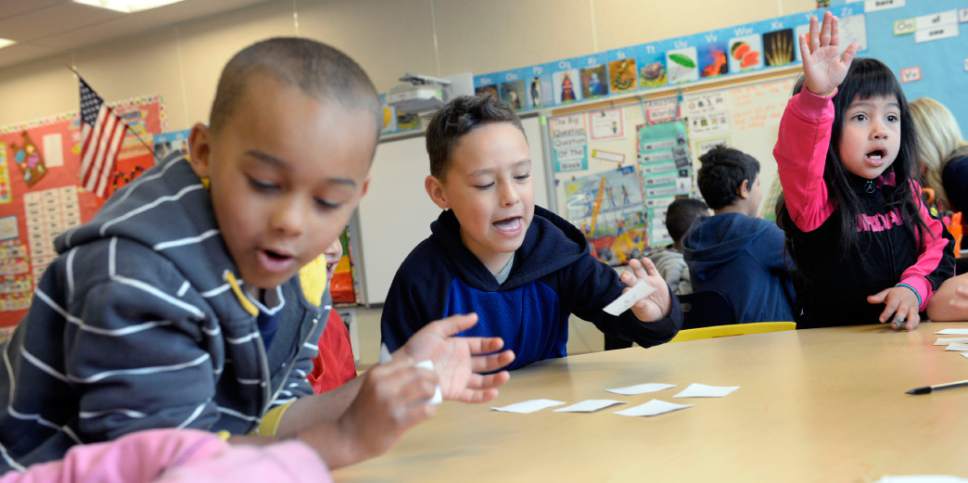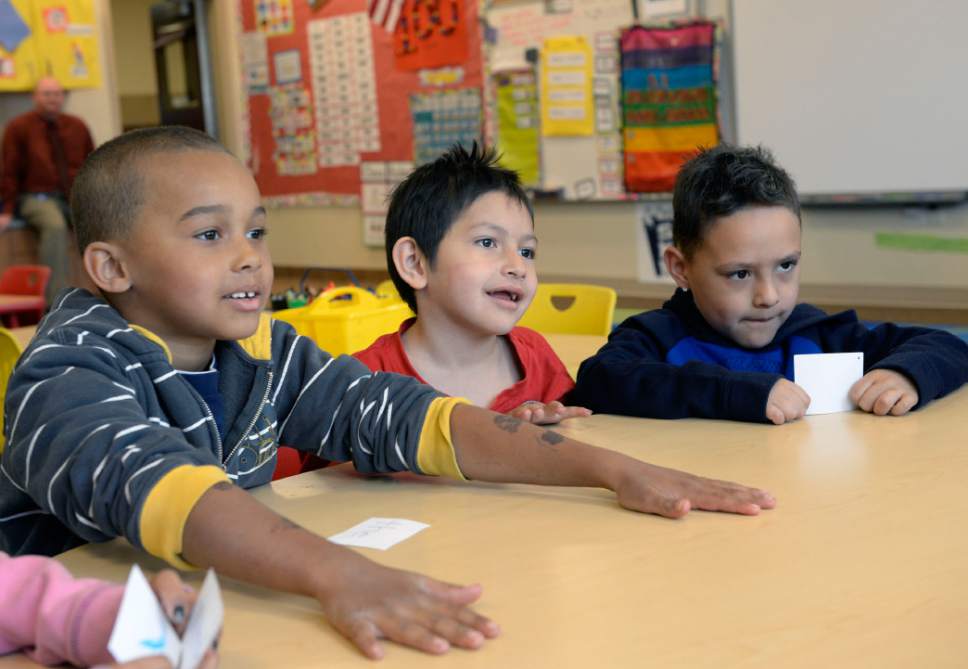This is an archived article that was published on sltrib.com in 2016, and information in the article may be outdated. It is provided only for personal research purposes and may not be reprinted.
After it was named a Title 1 Priority School in 2014 and received a federal School Improvement Grant, half of the teachers at Roosevelt Elementary left for jobs at other schools, principal Malynda Cloward said Monday.
And half again left the following year, she said, when Roosevelt Elementary was included in the first cohort of turnaround schools under a new Utah program.
"I start at step one every year because we keep changing over the teachers," Cloward said. "They can go elsewhere. They don't need to stay in these hard schools."
Cloward was one of several turnaround school representatives who met with a committee of the Utah Board of Education on Monday.
The meeting was somber as administrators described the exhaustion felt by educators while performance gains are largely discounted or ignored by school grading, the turnaround program's primary measuring stick.
"My teachers are devastated," Cloward said.
Out of the 26 schools on the turnaround program's 2015 list, 14 increased their test scores, graduation rates or ACT results enough to improve their letter grades under Utah's controversial school-grading law.
But after the grading scale changed in September — a shift triggered by widespread success — six turnaround schools maintained their improved letter grade, according to Sheryl Ellsworth, school turnaround coordinator for the Utah Board of Education.
For most schools, the letter grades carry no penalty beyond public perception.
For turnaround schools, failure to improve the grade within three years could lead to a school being closed, converted into a charter or forced to cede its budget and operations to a private management company.
Midvale Elementary Principal Chip Watts said the turnaround program is going well for his school. Test scores are up, he said, while student discipline violations are down, and teachers are happy and excited to come to work.
But it's hard, he said, to come to a meeting like Monday's discussion with the school board and see that his school is showing no change in school grading.
"There's got to be a better way," Watts said. "There's got to be more than one way to look at school improvement, [more] than that letter grade."
Utah lawmakers approved the school turnaround program in 2015, budgeting $8 million for the worst-performing 3 percent of public schools, based on school grading.
Each school was paired with outside consultants to implement strategies like additional training for educators, home visits to engage students' families and academic parent-teacher teams, or APTTs, which function as in-depth parent-teacher conferences to improve communication between the home and the classroom.
Administrators say the approach is having an effect, but they question why the bulk of state turnaround funding is reserved for private consultants, leaving cash-strapped school districts to foot the bill for new strategies.
"I see how much money is going to the turnaround company and how much it still costs outside of that," Carbon School District Superintendent Steve Carlsen said. "It's discouraging to me."
Utah's turnaround law also provides for salary and funding bonuses to schools that successfully lift their grades — "subject to appropriations by the Legislature" — but Vae View Elementary Principal David Pendergast said the promise of $1,000 in three years' time does little to alleviate the pressure on teachers today.
"That's insulting," Pendergast said. "That's not even a motivating factor for any teacher."
Improvement is unlikely, he said, as long as struggling schools are unable to recruit and retain high-quality, effective educators.
"We're dumping hundreds of thousands of dollars into training them," Pendergast said, "preparing them to be better teachers at other schools, because they'll leave as soon as they can."
State school board member Laura Belnap chairs the board's Standards and Assessment Committee, which conducted Monday's meeting.
She and her colleagues, she said, welcome feedback from school administrators on the challenges and successes of turnaround efforts.
"We want to know how to best help our turnaround schools," Belnap said. "We're going to look at this."
Twitter: @bjaminwood









